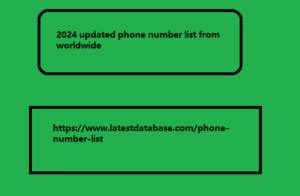We all would like a website that is highly positioned on search engines because, obviously, our project is fundamental for us.But Google doesn’t think like us.It is a free service that it offers to all of us users and it is the key to its business and its success as a company. Alphabet’s the holding company that controls Google and all its services revenue in 2023 was $307.
Google search query Of course
4 billionan increase of almost 9% compared to 2022.Over 300 billion dollars that depend on the free service it offers when we type a query like my name and surname into the bar. , you will understand that if he releases incorrect information and does not meet our needs, he risks losing something like 307 billion dollars.
Google is a complex activity
For this reason,positioning a website on that requires time and constant investment in SEO .To get started, it is essential to understand how Google and its search works . How a research is composed A Google search consists of 4 phases.Positioning, that is, the algorithm classifies each url and each content.At this point it is up to us to type the query into the search engine and Google will give us a SERP withthe contents that it has considered relevant and important for us and for that query.
Search engine analyses
The positioning phase is obviously the most important for us, because it determines whether our content will be promoted by the search engine or not.When we type a query into the search engine we can identify 5 main factors that the and that influence the results.
Meaning This is about search intent which Google tries to interpret through language models. They analyze how the few words entered into the search bar match the most relevant content available. Relevance: After interpreting intent, the systems examine the content to determine if it is relevant to the search.For example they evaluate whether it contains the same keywords as the query on the page, in the headers or in the body of the text. They use aggregated and anonymous data about interactions to ensure that the page offers other relevant content in addition to the keywords.
Phone number list is the right way to contact you. The latest mailing data is the best. We provide accurate database. From the list of phone 2024 updated phone number list from worldwide numbers you will find customers for your business through this mail list. If you want accurate database then you use our company site.
QualityGoogle prioritizes content
that appears most useful, identifying signals that indicate experience, expertise, authority, and trustworthiness, known as EAT metrics.Usability: When analyzing usability, content that is considered more accessible by users may perform better Japan Email Library This includes evaluations of aspects such as mobile viewing or loading speed.Context: Factors such as location, previous search history and personal Search settings are considered to ensure that the results shown to you are relevant and useful at that specific moment.
SEO Factors or Ranking Factors
All of this will depend on the so-called . What are SEO factors or ranking factors SEO factors are all those signals that influence positioning on search engines .Obviously knowing them is essential to optimize a site for SEO . According to enginee bj lists working at Google there are over 200, some are very important, others are less so.Over the years, these signals have gained or lost relevance, also because our way of using the search engine has changed. Each of them has its own specific influence within the calculation algorithm that rewards and decides the positioning of a website in Google’s SERPs.
Some are myths, some are hypotheses. Let’s see the main ones. I have read and accepted the Privacy Policy and authorize the processing of my personal data in accordance with the terms permitted by Legislative Decree 30.6.2003 n. 196 (“Privacy Code”) and art. Domain Age : Google uses information about the age of the domain, i.e. how long it has been active online. This is a signal of decreasing importance. Keyword present in the Top Level Domain : the weight of this factor has decreased a lot over the years. Even if the Keyword used is the first word of the domain.
Keywords in subdomain :
Some SEO analysts also identify the use of keywords in the subdomain as a ranking factor. This signal is also not very relevant. Domain registrant information : Google may favorably consider making the data of the person registering the site public. Registrant Penalization : The algorithm’s memory also extends to other properties of a registrant. For example, if it has been penalized for spam. Country Code in the domain : choose a top-level domain with an extension that reports the specific country code for the geographical territory to which it belongs.
Registration duration:
The duration of the domain registration is a credibility signal for the algorithm. Domain History : The past history of a site. Any penalties survive a change of ownership. Page Ranking Factors Keyword in Title : especially if it is on the left. The title is very important as an SEO signal. Keywords in Description: Google does not directly use the meta description tag as an SEO positioning factor, but at the same time the influence that synthetic descriptions can have on CTR has been reiterated and confirmed.
Keywords in
Although they often coincide, there is a difference between title tag and H1. The first is an element outside the navigation area of the page. This is a very important signal. Keyword density: It has been one of the most abused factors by SEOs in the past (keyword stuffing). Today, keyword density has lost value, to the point of not having it at all. Page structure with H2 and H3 etc : to give depth to the content. The use of the index in the article is recommended.
Content length
the algorithm prefers content rich in words over short ones. Obviously our goal will not be to make long and boring content, at that point it is better to have short and non-repetitive content. Duplicate content: Duplicates within the site have a negative impact. URL Size: Excessive URL length negatively impacts your site. URL Path: Pages that have URLs closer to the home page tend to rank better than pages that are far from the home page. The presence of the Keyword in the URL is important. Page Categories: These are the building blocks of a site’s architecture and a ranking factor.
Multimedia Content
The use of media such as images, videos, and other multimedia elements can be a sign of quality content. Image Optimization: Images are a critical part of your page and send relevance signals to search engines when properly optimized. UX, mobile optimization and performance: these are increasingly important factors, especially the new Core Web Vitals . Inbound and Outbound Links: Very Important Factors for SEO.
Site Ranking Factors Site Usability:
A site that is difficult to use and navigate can be penalized in terms of ranking. Site Architecture: A well-organized, clean, and well-coded site structure with thematic content architecture helps Google crawl and index. Presence of sitemap : facilitates crawling and indexing by Google. Breadcrumb navigation: Improves the usability of the site, allowing users and search engines to better navigate between pages and categories. Site Updates: Google loves sites that are updated and kept active with new content.
Contact Page:
inserting a page with the references and contacts of the property or managers is considered one of the main ranking factors of local SEO. SSL Certificate: Using an SSL certificate for the HTTPS security protocol is a ranking factor from Google. Privacy and Terms of Service Pages: Lack of them is a penalty factor. Videos: their presence enriches the contents but it is better if integrated by Youtube to not weigh down the pages too much. Ranking factors regarding link building Domain authority: that of the link received.
Page Authority:
The one that sends the link. The length of the page affects it. Number of domains: that link to the site that links to us. Number of pages: that link to our site. Age of the linking domain : its strength is transferred to the linked site and page. Link Age: A working and long-lived backlink conveys more relevance than a new one. Natural backlink profile : otherwise we could incur penalties. Backlink anchor text : anchor text helps Google define the main topic of the linked page. Link position on the page: a link in the central content of the page has a higher weight than those placed in other positions. Homepage links: They play a special role in evaluating a site.
Nofollow links
This could be an important element in building a natural backlink profile. Links from institutional sites: today it is not such a determining ranking factor. Competitor Links: Get links from a site that competes on the same SERP. Link from relevant domain: Receiving a backlink from a site that is relevant to the topic and belongs to the same niche is a significant ranking factor. Reciprocal Links: Google discourages reciprocal link exchanges between two sites or at least does not consider them relevant. Ranking factors related to user interaction Organic CTR: This means that the content/site is consistent with user requests.
Return traffic
A site is considered valid and quality if it attracts return traffic. Comment Count: The number of comments is an important ranking factor. Dwell Time: duration of a user’s dwell time, the higher it is, the more positively it influences. Pogo Sticking: Behavior of a user who lands on a site but abandons the page and returns to the SERP to consult the other results. Brand signals Presence of branded text anchors: this is a Digital PR strategy that is very important.
Brand and brand + keyword searches: Show that we are relevant in our industry. Social profiles especially if verified and if they have many followers and interactions: it shows that we are active on social media and are considered positively by users. Brand mentions in top stories: It shows that we are a brand. This is a very important signal.
Physical location of the business
obviously makes the business truthful. It is essential as Local SEO. Negative factors that can penalize you Excessive use of nofollow on exit : as seen as manipulation. Popups and intrusive advertising : These are considered as negative factors because they affect the user experience. Keyword stuffing: Seen as a negative factor because it tries to manipulate the algorithm. Clickbait : in general and also the lack of coherence between anchor text and topic link. Hidden Affiliate Links: Believed to be misleading and manipulative for the user.
Hacked Site :
An unsafe or hacked site is immediately hidden by Google. Unnatural Link Spikes: Google can identify whether your backlink reception rate is natural or not. Low-quality backlink profile: Google may interpret the presence of a low-quality backlink profile as an attempt to manipulate rankings. Selling links: If Google finds out that your site is selling links, it could penalize your visibility in searches. SEO Ranking Factor Myths The main false myths regarding SEO signals for positioning.
Bounce rate
Does not affect rankings. Google Display Ads: It doesn’t help or worsen positioning, but it could worsen the UX. AMP : This is an outdated technology, created by Google to speed up websites, hence the false myth that it helped SEO. Priority to the first link on the page : also false, does not indicate positioning. Up-to-date content: another aspect that is irrelevant if we are not newspapers. Conclusions We have come to the end of a long list of factors and signals that influence positioning on Google. If you think your website is not SEO optimized and you want to improve its positioning on search engines, contact me for a free consultation.



